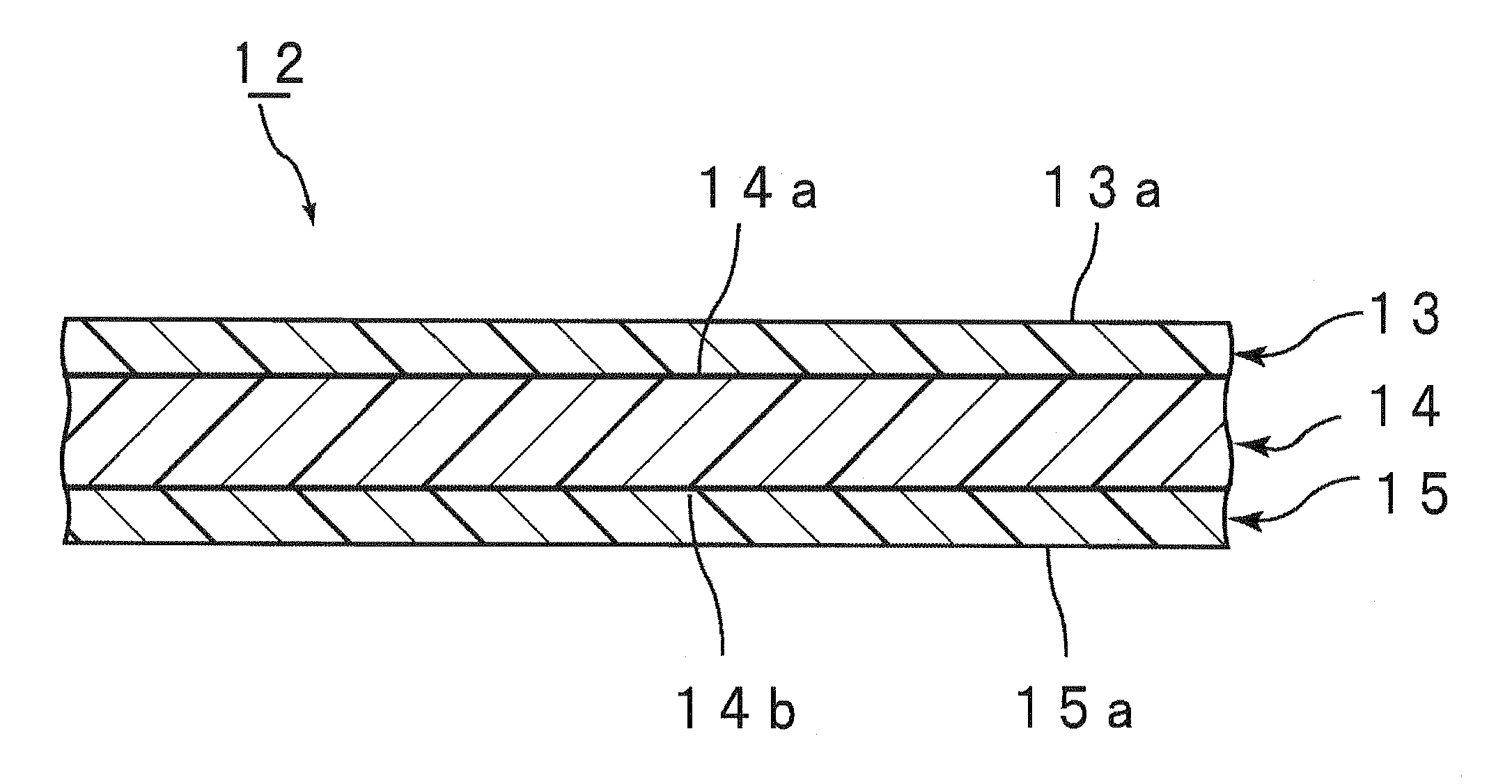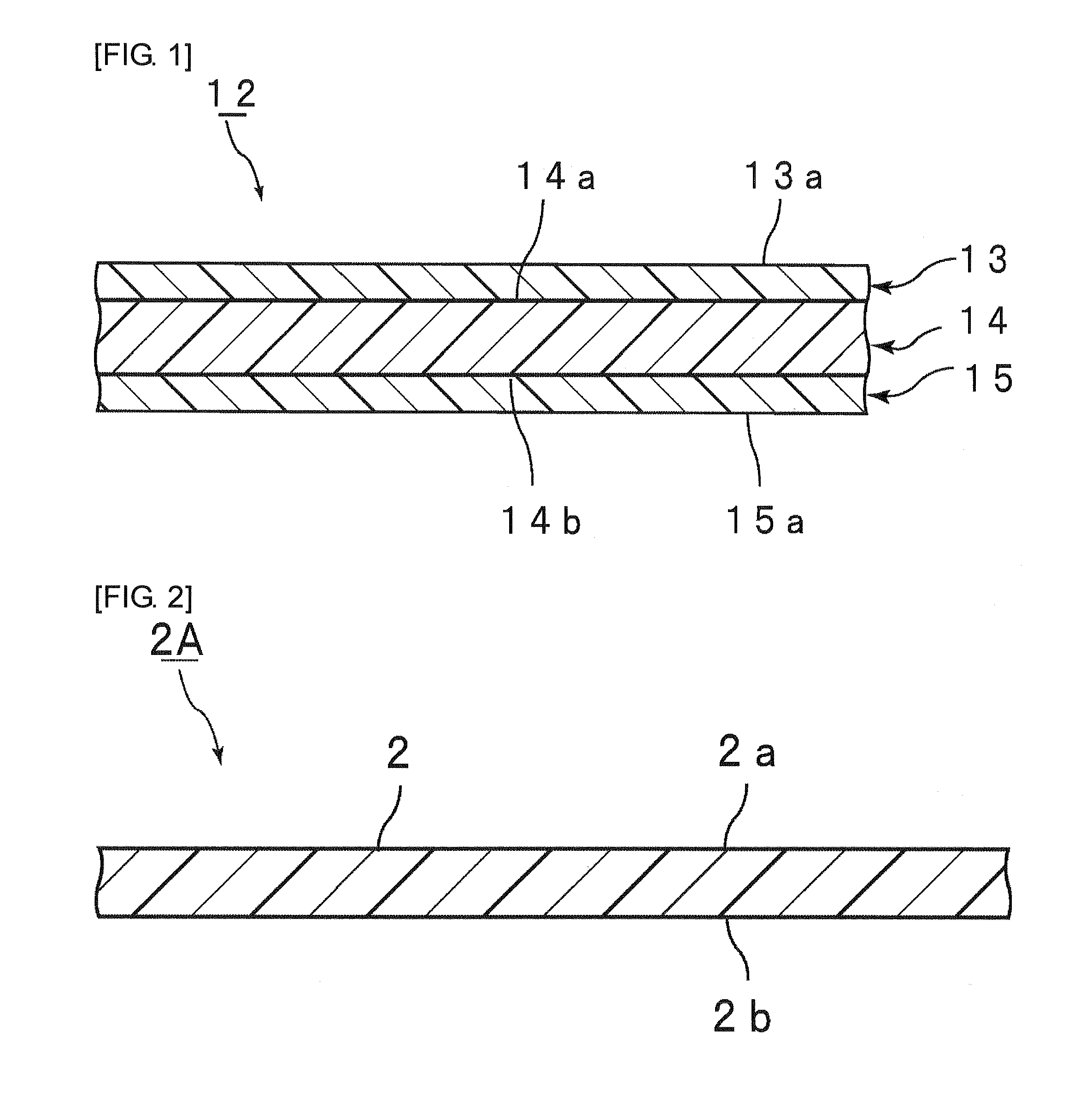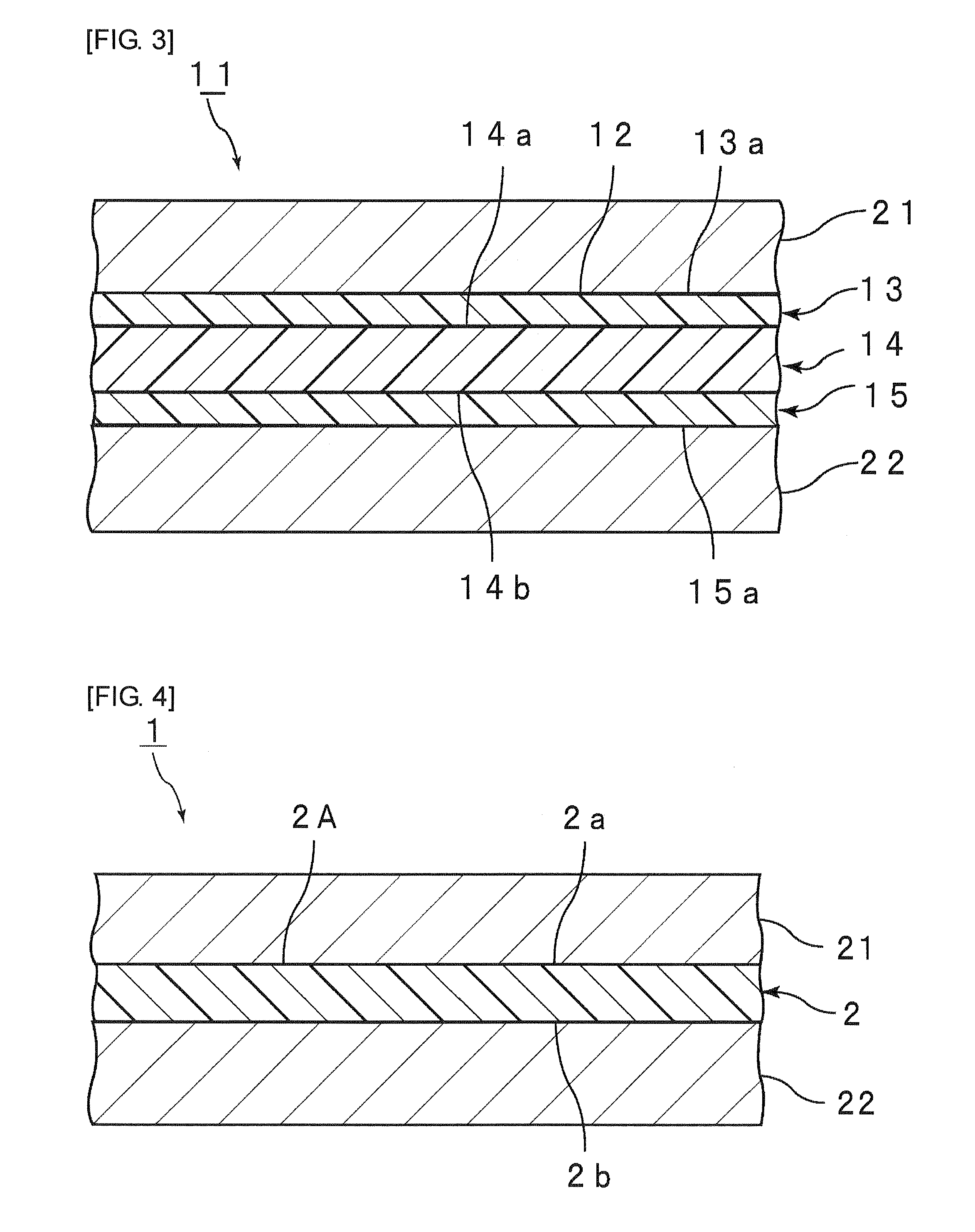Intermediate film for laminated glass and laminated glass
a technology of laminated glass and intermediate film, which is applied in the direction of chemistry apparatus and processes, synthetic resin layered products, transportation and packaging, etc., can solve the problems of insufficient sound insulation and deterioration of achieve the effect of increasing the sound insulation of laminated glass
- Summary
- Abstract
- Description
- Claims
- Application Information
AI Technical Summary
Benefits of technology
Problems solved by technology
Method used
Image
Examples
example 1
[0214]To the polyvinyl butyral resin A (100 parts by weight, carbon number of the acetal group: 4, average degree of polymerization: 3000, hydroxyl content: 22.5 mol %, acetylation degree: 12.8 mol %, butyralization degree: 64.7 mol %) obtained in Synthesis 1 was added bis(2-butoxyethyl) adipate (50 parts by weight) as the first plasticizer. The mixture was sufficiently kneaded with a mixing roll, so that a composition for a first layer was obtained. The polyvinyl butyral resin used was a polyvinyl butyral resin acetalized with n-butylaldehyde.
[0215]The resulting composition for a first layer was sandwiched between two fluororesin sheets via 0.1 mm-thick clearance plates. The laminate was press-molded at 150° C. to give an interlayer film B1 (first layer) having a thickness of 0.1 mm.
[0216]To the polyvinyl butyral resin A (100 parts by weight, carbon number of the acetal group: 4, average degree of polymerization: 3000, hydroxyl content: 30.5 mol %, acetylation degree: 1 mol %, buty...
examples 2 to 8
[0219]The interlayer films B1 and B2 were produced in the same manner as in Example 1 using compositions for first and second layers prepared from polyvinyl butyral resins and plasticizers shown in Tables 1 and 2. Using the interlayer films B1 and B2, multilayer interlayer films B were obtained. Polyvinyl acetal resins used were polyvinyl acetal resins acetalized by n-butylaldehyde. In each of Examples 2, and 6 to 8, the polyvinyl acetal resin used for the first layer was the polyvinyl acetal resin A obtained in Synthesis 1.
example 9
[0282]The polyvinyl butyral resin A obtained in Synthesis 1 (100 parts by weight, carbon number of the acetal group:4, average degree of polymerization: 3000, hydroxyl content: 22.5 mol %, acetylation degree: 12.8 mol %, butylarization degree: 64.7 mol %), bis(2-butoxyethyl) adipate (42 parts by weight) as the first plasticizer, and triethyleneglycol di-2-ethylhexanoate (18 parts by weight) as the second plasticizer were sufficiently mixed and kneaded with a mixing roll to give a composition. It is to be noted that the used polyvinyl butyral resin was the polyvinyl butyral resin acetalized by n-butylaldehyde.
[0283]The resulting composition was sandwiched between two fluororesin sheets via 0.8 mm-thick clearance plates. The laminate was press-molded at 150° C. to give a multilayer interlayer film A having a thickness of 0.8 mm.
PUM
| Property | Measurement | Unit |
|---|---|---|
| Percent by mass | aaaaa | aaaaa |
| Percent by mass | aaaaa | aaaaa |
| Percent by mass | aaaaa | aaaaa |
Abstract
Description
Claims
Application Information
 Login to View More
Login to View More - R&D
- Intellectual Property
- Life Sciences
- Materials
- Tech Scout
- Unparalleled Data Quality
- Higher Quality Content
- 60% Fewer Hallucinations
Browse by: Latest US Patents, China's latest patents, Technical Efficacy Thesaurus, Application Domain, Technology Topic, Popular Technical Reports.
© 2025 PatSnap. All rights reserved.Legal|Privacy policy|Modern Slavery Act Transparency Statement|Sitemap|About US| Contact US: help@patsnap.com



